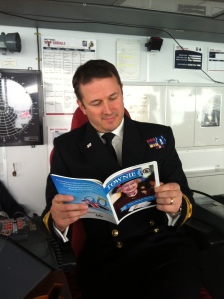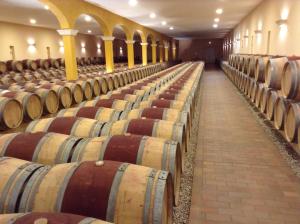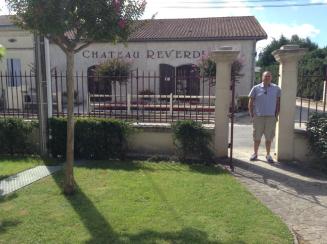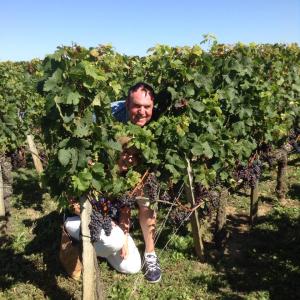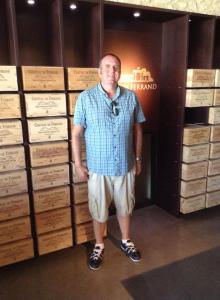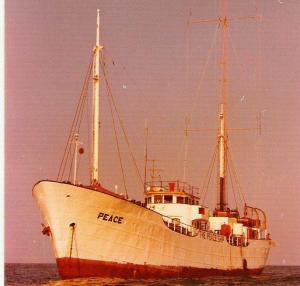The first time I stood for the douzaine back in late 2012 it was pretty straightforward. I filled in a form at the Constables office, found a proposer and a seconder, both of which had to be on the electoral roll, and when nominations closed I was told that as the number of candidates was equal to the number of vacancies I was duly elected. At the Parish Meeting we were asked to introduce ourselves to everyone. As a presenter on Island FM, I’m used to speaking to thousands of listeners but I still get slightly nervous standing up in front of audiences in the flesh. Parish Meetings attract a regular group of parishioners who are usually very passionate and knowledgeable about local issues but the challenge is to attract more people to come along and have their say. I felt very proud to belong to the Douzaine which is far older than the States itself According to Darryl Ogiers’ superb book ‘The Government and Law of Guernsey’ St Peter Port Douzaine was mentioned in a document from 1444 but may have its origins in the thirteenth century.
I served my four year term and found it rewarding if sometimes very challenging as the Douzaine was rocked by public controversy on several occasions. You have to develop a thick skin! The Douzaine serves the island’s capital and as such is subject to more media coverage than the other parishes. A decision was taken to start posting redacted minutes of our monthly meetings on the Constables website which I personally welcome; we publish the Townie Magazine twice a year and our activities and decisions are widely discussed on social media. In my first four years I’ve learned an enormous amount both about this lovely parish but also about the States. Town deputies attend the first part of our monthly meetings and we have a chance to question them and give our views on items in the billet and other matters of local concern.
Towards the end of last year I had to decide whether to re-stand and, after much thought and discussions with my partner Bev, decided to stand again. This time there were seven candidates for five seats and parishioners decided at the parish meeting that a full election should be held complete with two polling booths at Beau Sejour and the Constable’s Office. We were given two minutes to stand up and make a short speech on the night. I had prepared one but decided this time to ad-lib. We were told we could spend up to £600 on our campaign. In the end I decided to produce a simple A4 leaflet, spent £40 on photocopying and delivered it from door-to-door. It was good to meet people in person and issues raised ranged from wheelie bins through the Christmas lights to hedges. I had expected dogs to sometimes snap my hand putting the leaflet through letter boxes (which they did but happily missed) but I hadn’t expected so many letterboxes to have brushes fitted which virtually destroyed many a leaflet before it hit the doormat! I work full-time but tried to get around as much of the parish as possible in the evenings and weekends but I apologies if I didn’t reach you…
Election Day came and I made sure I was outside the Constables Office in plenty of time for the 10am opening carrying my ‘Vote Harding’ sign and some spare re-written leaflets. I was joined after a while by the two successful new candidates Adrian Gabriel and Tim Bush. After a hastily eaten snack Adrian and I headed up to Beau Sejour. On two occasions a prospective voter left us to look after their dogs while they went in to cast their ballot! You can never tell for sure if people have voted for you but try to guess- if they rush past or fail to make eye contact it’s probably not a good sign… I stayed at Beausie until the polls closed at 8pm before going home for something to eat. Less than an hour later, I returned to the Constables Office to wait nervously outside with the others for the count to finish and the doors to swing open. We were invited inside the entrance hall and although I hoped to scrape in, I was astonished and humbled to have topped the poll! I feel this time I have a proper mandate from parishioners that only a full election can give, although I wish the turnout were far higher than 5% of parishioners on the roll. A few weeks later I joined the other returning and new douzeniers to be sworn in by the Bailiff Sir Richard Collas at the Royal Court.
Douzaine elections are unlikely to ever match the States general election for turnout and media coverage but we need to try and reach more people. We are your Douzaine and are recognised by the states as being the ‘grass roots level of government’. Should island wide voting be introduced in the States, the douzaines will be even more vital in maintaining that personal connection with people. If you would like to throw your hat into the ring there are usually a couple of elections a year so why not stand yourself? Here’s to the next four years!
*The very approximate UK equivalent of St Peter Port Douzaine would be the St Peter Port Town and Parish Council. Douzeniers are Councillors and the Constables are the Mayor and Deputy Mayor.
This article was originally published in The Townie.
Photo Richard Lord



